Mobility Devices
Mobility devices are important for people with Mito or any neuromuscular diseases, and can help improve safety and quality of life.
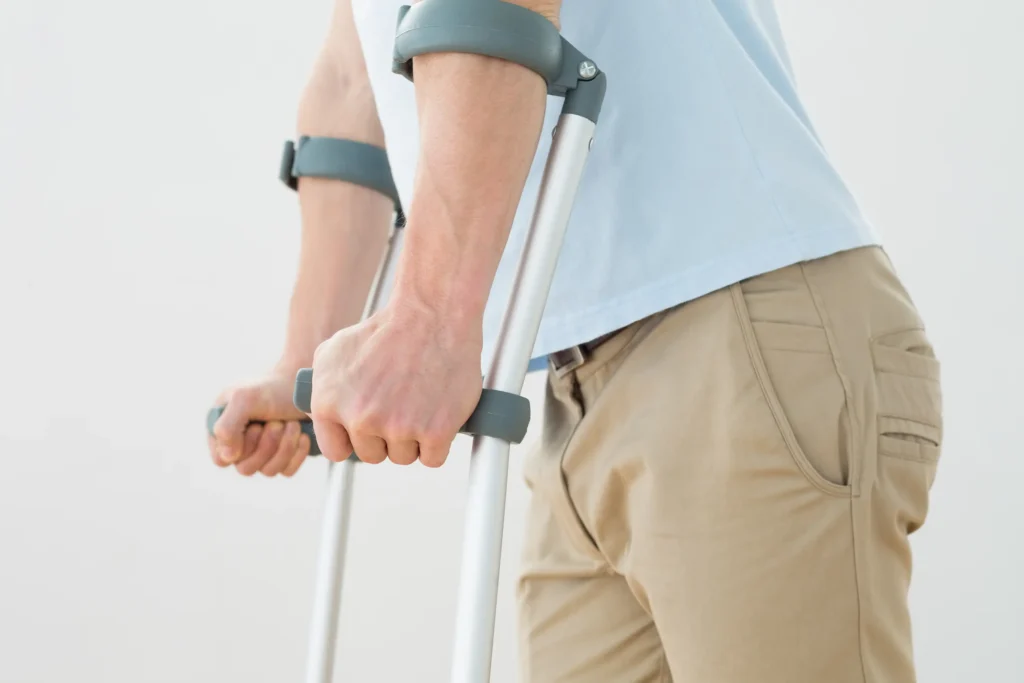
Mobility devices are important for people with Mito or any neuromuscular diseases, and can help improve safety and quality of life. Here are some of the most common mobility devices, along with pros and cons for each. Each device is different, it’s up to you and your healthcare team to figure out which devices will best fit your needs.
Mobility Devices – Canes
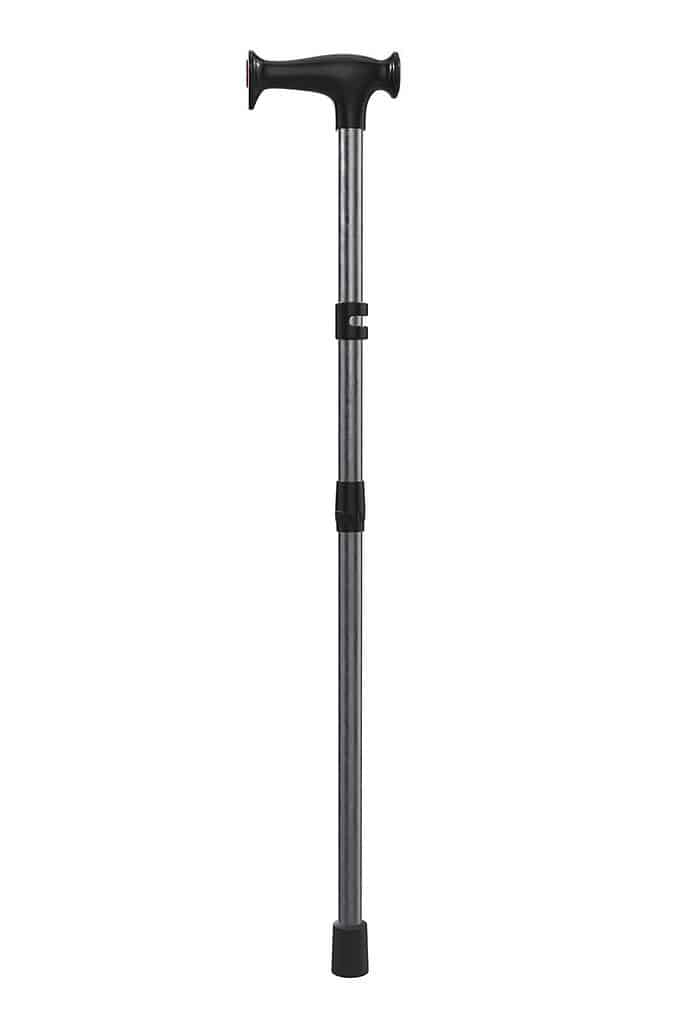
Single-point Canes and Walking Sticks
Best choice for: people with good upper body strength, and good/fair lower body strength, mild balance problems.
Benefits: inexpensive mobility devices, easy to purchase at drug stores, department stores, and medical suppliers. Wide variety of styles, some canes fold for easy storage-great for people with intermittent weakness or balance problems because they can be stored virtually anywhere and easily unfolded when needed.
Drawbacks: weakness or dizziness must be mild; so not offer enough stability for moderate to severe symptoms. Weight limits apply, especially for folding canes. A large percentage of people using canes/walking sticks are using them incorrectly and are using the wrong size.
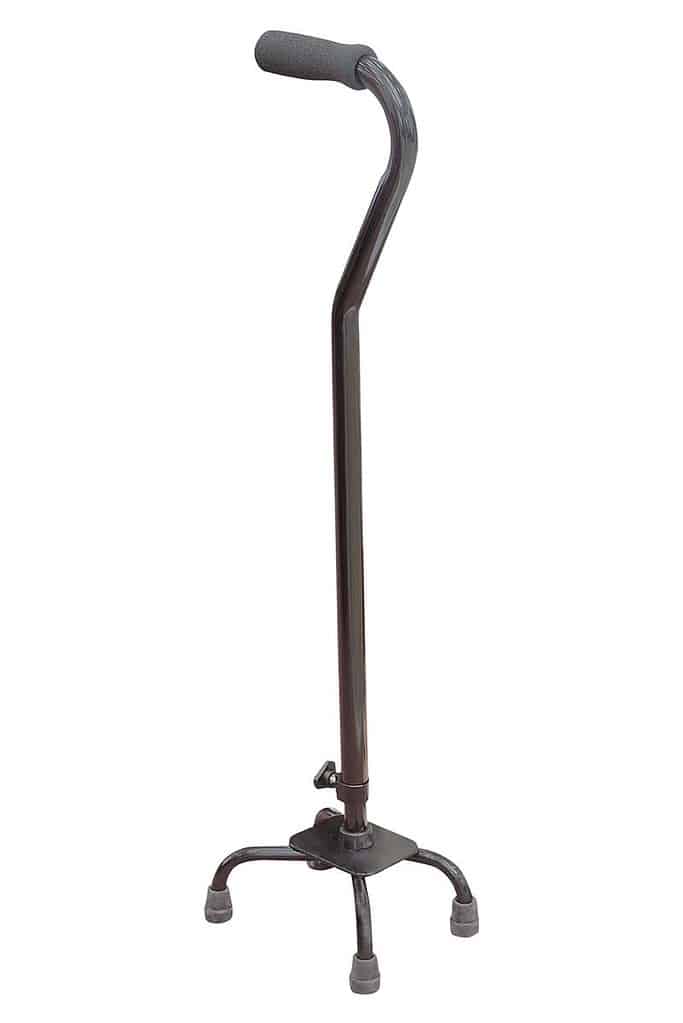
Quad cane
Best used by: same as single point cane or walking stick, but can be used by a person with moderate dizziness or lower body weakness. Cane has four contact points that give the user extra stability.
Benefits: same as single point canes, except quad canes do not fold.
Drawbacks: same as single point canes; weight limits still apply, but can accommodate higher weights.
Mobility Devices – Crutches
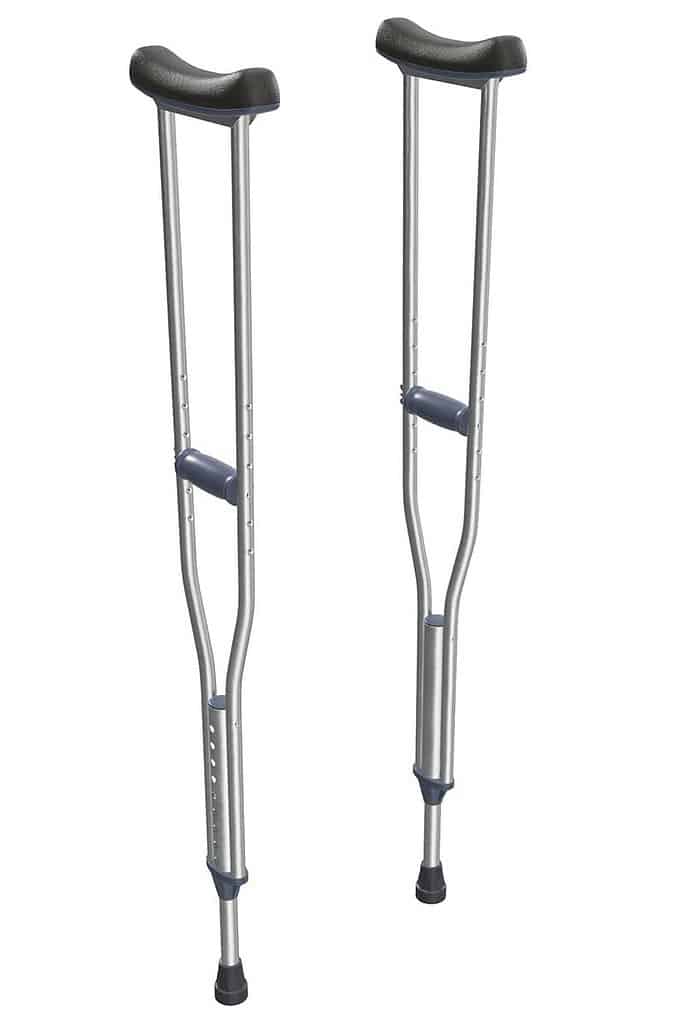
Common Axillary Crutch
Best used by: People with very good upper body strength who need a mobility aid on a short-term or intermittent basis.
Benefits: Inexpensive and readily available, When used correctly, can support 80%-to 100% of a person’s body weight, enabling them to avoid weight bearing one lower extremity.
Drawbacks: Does not allow hands to be used while walking, requires a lot of upper body strength and endurance. Crutch axillary pads and hand grips are often made of latex, which can cause serious allergic reactions. If used improperly, the person can sustain nerve damage from axillary (armpit) pressure.
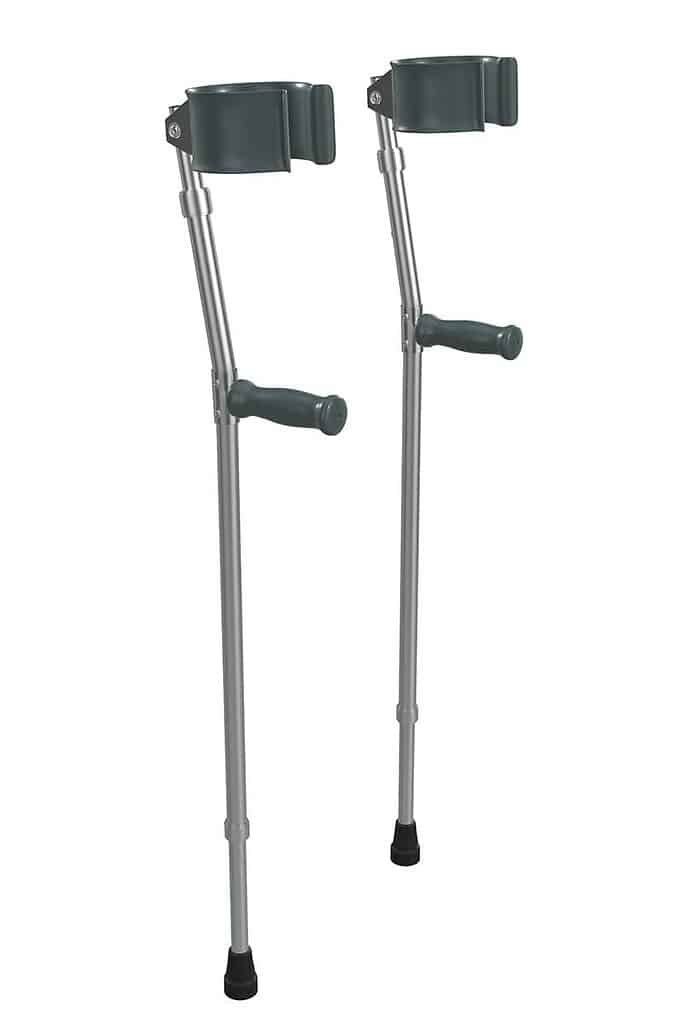
Forearm Crutches
Also called Canadian or Lofstrand Crutches
Best Used by: people with mild-moderate weakness in both upper and lower extremities
Benefits: less cumbersome than axillary crutches, able to maneuver easier than with a walker, encourages a more normal gait, user is able to momentarily free a hand to open a door or pick up a small item while the wrist cuff remains in place.
Drawbacks: Requires upper and lower body endurance, crutches only hold 40-50% of body weight so individual must be fully weight-bearing;
Mobility Devices – Walkers
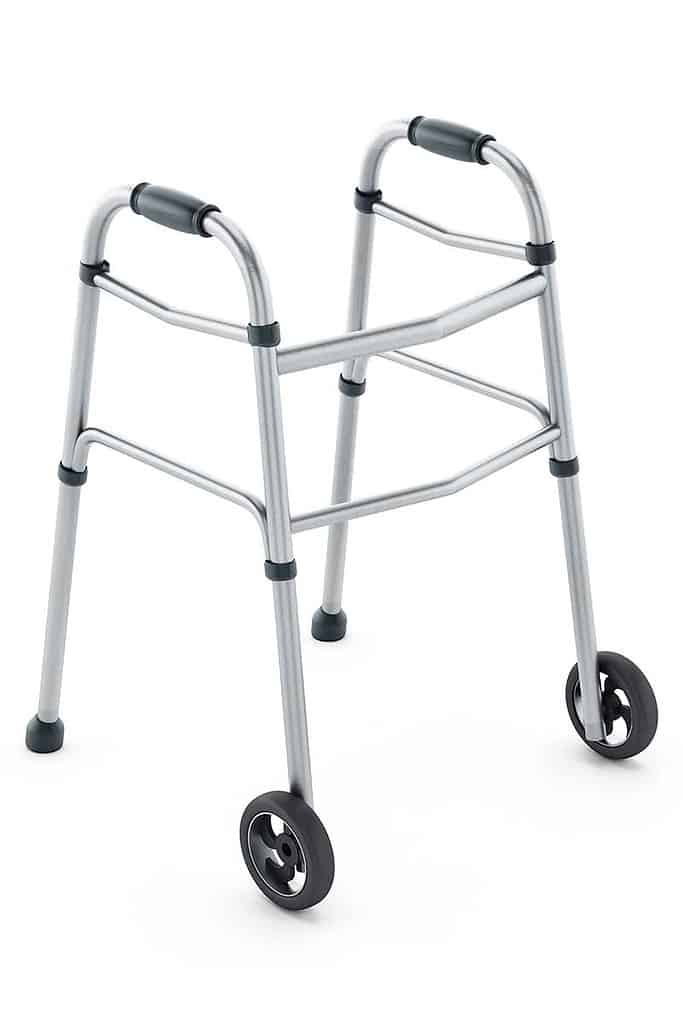
Walking Frame
A Walking Frame (commonly called a “standard walker”) is a mobility device with three-sided metal frame that may have wheels, plastic “skis” for gliding on carpets or floors, or rubber cane tips. Comes in foldable and fixed models.
Best Used By: people with moderate to severe balance problems, mild-moderate upper extremity and moderate lower extremity weakness. Recommended for people who need assistance ambulating even short distances, such as bedroom to bathroom.
Benefits: offer the most stability of all mobility devices. Some models fold completely flat for storage or transportation. Some walkers can be turned around and placed over the toilet to provide a sturdy grab bar configuration to assist with standing.
Drawbacks: Walking speed is slow. Rubber tips or skis provide much greater stability than wheels, but result in the need to completely lift the walker with each step (4 rubber tips, or 2 tips/2 skis or wheels) or slide the walker forward on the floor or carpet. Not designed for use on grass or uneven terrain, do not include a seat for resting.
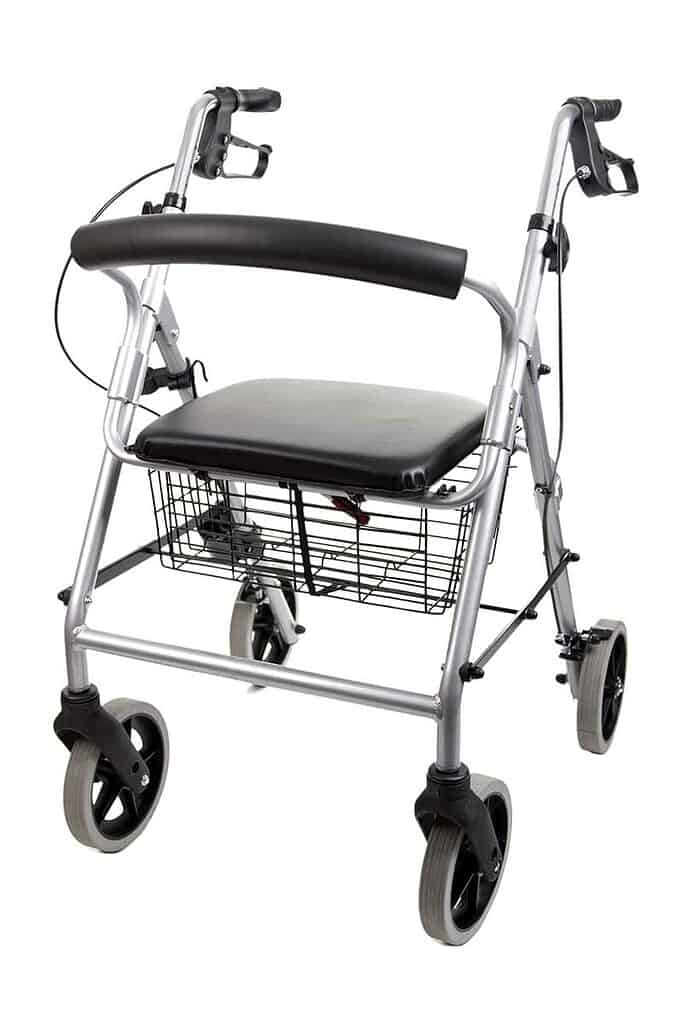
Wheeled Walker
A Wheeled Walker (commonly called a “rollator”) has either 3 or 4 wheels and a built-in seat. Most designs have hand brakes that can be used to improve control of the walker and also to lock the wheels when necessary (such as when sitting on the seat or standing in place.)
Best used by: Rollators are designed for those who have some mobility issues however can still get out and might require some extra rest for their endurance by using the seat.
Benefits: Provide much more mobility than a standard walker, and can be used inside or outside the home.
Drawbacks: The addition of wheels make the rollator less stable than a standard walker.










